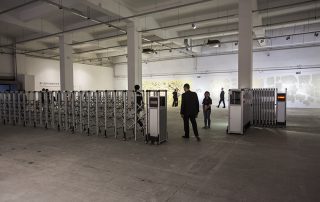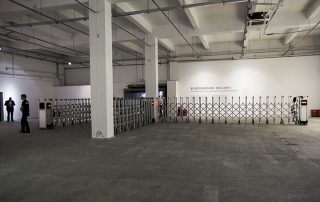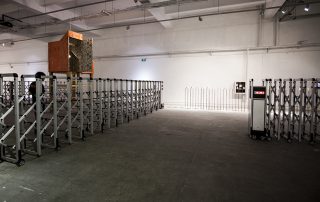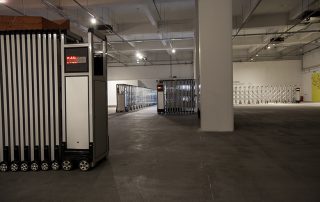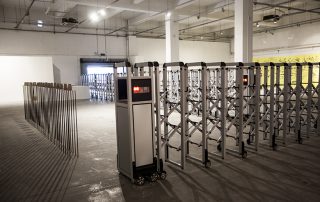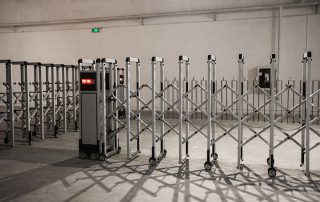Fascinated by the automated motorised barriers so commonly seen at the entrance to everything from schools to factories, Zamora has used six of them to create a carefully choreographed arrangement in which their slow movements create and remove seemingly random obstacles and pathways in the exhibition space. These standard elements of the Chinese urban environment have strong connotations of blocked or closed spaces, of public and private, by defining and controlling different domains within a shared environment. For Zamora, the structural efficiency of the mechanism itself is also alluring in how it expands and contracts as if the space were pulsating to its own rhythm. The work interacts not only with the public, with which it interferes formally and symbolically, but also with the exhibition space and the biennial. By blocking or opening passages, the barriers modulate different pathways through the exhibition space just as the slogans displayed on the their screens modulated Chinese society. These much reiterated slogans often remain invisible through familiarity in day-to-day life yet retain strong symbolic power, not least in the specific context of the city of Shenzhen, so closely associated with Deng Xiaoping’s economic policy of ‘Reform and Opening Up’.
12 slogans:
1. Let 100 flowers bloom, 1956
2. Dare to think, dare to act, 1958
3. Smash the four olds, 1966
4. To Rebel is justified, 1966
5. Smash the gang of four, 1976
6. Reform and opening up, 1978
7. Seek truth from facts, 1978
8. Have fewer children, raise more pigs, 1979
9. Three represents, 2000
10. Harmonious society, 2005
11. Three supremes, 2007
12. Chinese dream, 2013
